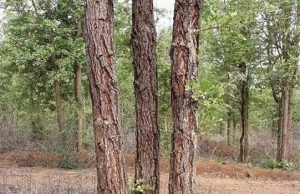10 November
Efforts are on to put thanaka, which is a distinctive feature of Myanmar culture, on the UNESCO intangible cultural heritage list for the first time, said U Kyaw Lwin Oo, director-general of the Ministry of Religious Affairs and Culture, at the Thanaka Conference held in Monywa.
“Nowadays, Myanmar traditional thanaka is being imitated by some countries. They wear thanaka as a mark of their country’s culture. So, we need to make an attempt to nominate our thanaka for the UNESCO’s World Heritage List to be able to conserve the traditional practice. We have been coordinating on this issue for 7 or 8 years. We have to submit the form not later than March, 2020. We will conduct meetings and workshops soon in relation to this effort,” said U Kyaw Lwin Oo.
The Ministry of Religious Affairs and Culture is upgrading the list of tangible heritage sites, such as pagodas and other ancient buildings, while conserving the country’s intangible heritage, such as the practice of wearing thanaka and performing arts (commonly abbreviated Sokayeti), in cooperation with international organizations like the UNESCO.
“Thanaka is a tangible product, but the practice of wearing thanaka forms a part of our intangible heritage. The practice of wearing thanaka started at the end of 11th century AD. Myanmar people have traditionally loved to wear thanaka,” said U Kyaw Lwin Oo.
According to the list compiled by the ministry, there are a total of 2,502 intangible cultural heritages in Myanmar. But, it expected Myanmar would have more intangible cultural heritages. “There are more than 200 countries in the world. Among them, 198 countries are members of the UNESCO. A total of 508 intangible cultural heritages from 122 countries have been named in the UNESCO world heritage list. However, Myanmar hasn’t named anything yet for UNESCO although the country has more than a hundred thousand intangible cultural heritages. About 33 intangible cultural heritages from seven ASEAN countries have been named by UNESCO. Last year, the Thai traditional massage was listed as an intangible cultural heritage by the UNESCO,” said U Kyaw Lwin Oo.—Myo Win Tun (Monywa)
(Translated by Hay Mar)


